As an eye care professional, you are a guardian of sight, a vital aspect of the human experience. Vital to your toolkit is your trusty tonometer, a device used to measure intraocular pressure. Tonometers are critical to detecting conditions like glaucoma, a leading cause of blindness globally. So, let’s dive in and explore what every eye care professional should know about these invaluable instruments.
“Eyesight is perhaps the most cherished of our senses. The effective use of tools like tonometers by eye care professionals is vital in the maintenance and preservation of this remarkable gift.”
From getting hands on with both Goldmann and non-contact tonometers, through understanding the intricate calibration process, to appreciating the crucial patient communication involved, this article is your one-stop resource. Whether you are a seasoned optometrist or a novice technician, this guide will provide useful information and insights into the world of tonometry. Let’s make every examination count, for the health of every eye in your care.
A tonometer is a key instrument in an eye health professional’s toolkit. Working as a pressure gauge, it measures the intraocular pressure (IOP) within a patient’s eyes. This pressure is critical to monitor because it can help identify conditions like glaucoma, which if left unchecked, may result in serious vision loss. There are several types of tonometers, including contact and non-contact variants, with the Goldmann applanation tonometer (GAT) being the most widely recognized and acknowledged as the clinical ‘gold standard’.
When diving into the specifics of tonometry, Goldman Applanation Tonometry (GAT) immediately stands out. Invented by Hans Goldmann back in 1948, GAT quickly established itself as the primary method for measuring intraocular pressure (IOP) in patients. Today, it still holds this title, often being referred to as the “gold standard” in IOP measurement. Both ophthalmologists and optometrists commonly utilize this technique due to its superior accuracy and precision.
However, while GAT may be the go-to technique for many eye care professionals, it’s not the only tonometry method at your disposal. In fact, alternative tonometry methods, such as contact tonometry or the usage of Perkins tonometers, can be employed by a range of medical personnel, including nurses, ophthalmic technicians, and even emergency medicine personnel. These alternatives can be particularly useful in cases where GAT is less suitable. Examples of these cases include patients dealing with open globe wounds, keratoconjunctivitis, irregular astigmatism, or corneal ulcers.
Remember, accuracy in measuring IOP isn’t just about having the right tools—it’s about the right people using those tools. Many times, those people are the nursing, allied health, and interprofessional staff who work tirelessly to ensure the proper functioning of the tonometers. From day-to-day management to troubleshooting equipment issues, these individuals play a vital role in maintaining the standard of patient care.
As an eye care professional, it’s essential to recognize that proper use of a tonometer can have a substantial impact on a patient’s vision health, especially in the management of glaucoma and other serious eye conditions. An accurate, precise Intraocular Pressure (IOP) could mean the difference between preventing irreversible vision loss and providing comprehensive patient care, or missing an important diagnosis. Consider this: you’re using the Goldmann Applanation Tonometer (GAT), an often-used device in measuring IOP. Your patient has an irregular astigmatism or keratoconjunctivitis, which makes GAT less suitable. This is where alternative tonometers come in handy, such as a Perkins tonometer. Compact and portable, the Perkins tonometer is equipped with an adjustable forehead rest, an illuminations source, a viewing lens, and a milled thumb-wheel for accurate IOP measurements.
Having a variety of tonometers at your disposal allows for versatile patient care. And let’s not forget about the INAMI Applanation Tonometer, which swings into action with its handy arm and pair of cone prisms, perfect when more specific needs arise. The key point here is that every tonometer has its particular pros and cons, each designed to navigate differently around the intricacies of diverse ocular structures. Remember this, though: accuracy isn’t just dependent on the type of tonometer used. The tool is only as reliable as its calibration. Regularly using control weight bars to make sure your tonometer stays precise is paramount in ensuring you’re administering correct measurements and offering optimal care to your patients.
Your team is also a crucial element in this process. The nursing staff, allied health, and interprofessional collegaues have a significant role in checking and maintaining the proper functioning of the tonometers. With proper training and communication, these professionals become irreplaceable in your mission to provide accurate and effective eye care.
With this obtained insight into the functions and intricacies of multiple tonometers, you are now better equipped to serve your patients’ needs, protect their vision health, and enrich the overall quality of your eye care services.
To proceed with an efficient tonometry examination, it is essential to keep in mind the suitability of various types of tonometers according to the patient’s condition. For instance, while most applanation tonometers demand cooperative patients in an upright position, Perkins tonometers are a more flexible choice, enabling its use in a supine position and offering the advantage of portability.
Meanwhile, Goldmann tonometers require mounting on a slit lamp with patients in an upright position – a detail that highlights the diversity in operation amongst tonometers.
What is common across all these types, however, is the necessity for accuracy and precision. It is crucial that a tonometer measures Intraocular Pressure (IOP) reliably to manage patients with glaucoma and other eye conditions effectively, as this can help prevent irreversible vision loss and assure comprehensive patient care.
To maintain this level of reliability, tonometers need to be calibrated periodically with a control weight bar. Failing to do so could lead to inaccuracies in the IOP measurements, thus compromising the overall effectiveness of the tonometer.
A key aspect often overlooked is the role of the nursing, allied health, and interprofessional staff. These individuals play a significant role in ensuring the proper functioning of tonometers. Their contribution, in conjunction with the right knowledge and technique from the eye care professional, ensures effective tonometry.
Always remember, while the tool is crucial, appropriate training and communication skills are vital for accurate IOP measurements. For specific cases, such as patients with open globe wounds, keratoconjunctivitis, irregular astigmatism, or corneal ulcers, alternative tonometers may be more suitable than Goldmann Applanation Tonometry (GAT). Thus, a keen understanding of each patient’s unique needs and the versatility of each tonometer is what every eye care professional should strive for.
| Tonometer Type | Notable Characteristics | Typical Applications |
|---|---|---|
| Goldmann Applanation Tonometer (GAT) | Invented by Hans Goldmann in 1948, considered the gold standard for measuring IOP | Ideal for comprehensive eye exams, where precision is crucial |
| Perkins Applanation Tonometer | Portable and easily adaptable for patients who can’t be positioned in front of a slit-lamp | Optimal for home visits, intensive care, or emergency situations |
| INAMI Applanation Tonometer | Equipped with a swing arm and two cone prisms | Useful in the evaluation of glaucoma and ocular hypertension |
| Air-puff Tonometer | Available in several types, both desktop and portable handheld models | Great for quick screenings and for patients who prefer non-contact examinations |
Now that we’ve covered the essential tonometers, let’s delve into their proper usage. It’s important to remember that some patients may have conditions that contraindicate the use of certain tonometers. For example, applanation tonometry, including both GAT and Perkins, should ideally be avoided in cases of eye abrasion, severe trauma, globe rupture, signs of an underlying infection, or a patient’s intolerance to fluorescein or topical anesthetic drops. Considering the patient’s overall health status and eye condition is paramount in choosing the appropriate tonometer.
Tonometry is indeed a skill to master, and each tonometer has its unique technique that goes along with it. GAT, for instance, is typically performed by ophthalmologists and optometrists, using a slit lamp with the tonometer attached. While Perkins, due to its portability, is often used outside the traditional office setting by a variety of healthcare professionals, including nurses and emergency medicine personnel.
Furthermore, as an eye care professional, you should keep in mind that measurements of intraocular pressure (IOP) can vary significantly from one type of tonometer to another. In fact, a study by Martinez-de-la-Casa JM, et al. highlighted that the ocular response analyzer’s readings were significantly higher when compared to the gold standard GAT (Invest Ophthalmol Vis Sci. 2006 Oct;47(10):4410-4. PubMed: 17003433).
Finally, it’s essential to constantly update your skills and know about the latest trends and studies regarding tonometers. The choice of the right tonometer can provide accurate and reliable IOP readings, ensuring the best possible patient care. Remember, tonometry is an invaluable part of comprehensive eye care. And as an eye care professional, understanding each tonometer’s nuances and applications will serve you well in your practice.
The Goldmann applanation tonometry (GAT) is considered the gold-standard method for measuring IOP. Invented by Hans Goldmann in 1948, it has stood the test of time and remains widely utilised by ophthalmologists and optometrists worldwide.
It’s advisable to use an alternative tonometer in specific cases such as keratoconjunctivitis, open globe wounds, irregular astigmatism, or corneal ulcers, where GAT might not be suitable. An alternative method can also be administered by nurses, ophthalmic technicians, or emergency medicine personnel.
Non-contact tonometry (NCT) is a simple and quick technique that doesn’t require any local anesthesia or fluorescein. However, NCT isn’t recommended for routine clinical use, particularly not for patients with elevated IOP or glaucoma.
IOP measurements are crucial for diagnosing, screening, and managing patients with glaucoma. It’s especially important as lowering IOP can help in slowing down the progression of glaucomatous optic neuropathy and visual field defects.
If mobility is required, a portable tonometer like Perkins could be a good choice. This type of tonometer is compact and easy to use, making it ideal for fieldwork or settings where the patient can’t comfortably access a stationary unit.
In conclusion, tonometers play a pivotal role in the world of eye care, providing essential intraocular pressure measurements that help detect and manage eye conditions like glaucoma. While Goldmann applanation tonometry remains the gold standard in IOP measurement, many other forms of tonometers, such as Perkins and non-contact tonometers, offer their unique benefits and use cases. The choice of tonometer should foremost be guided by the specific needs of the patient and the clinical conditions at hand.
As an eye care professional, understanding the various types of tonometers, their applications, differences, strengths, and limitations is integral to ensuring accurate measurement and patient outcomes. Remain adaptable and equipped with knowledge about alternative tonometers, as there might be instances where the Goldmann method is less suitable. Remember, your expertise and skills in utilizing these tools are key in providing thorough eye care and preventing irreversible vision loss.
Embrace the progress in technology, but never forget the fundamentals. Training and solid communication lines between the caregiver and patient are vital for achieving precise IOP measurements. Never underestimate the power of a well-administered tonometry reading. You hold the fundamental keys to preserve the precious window to the world – the human eye.
VISIT OUR SHOP
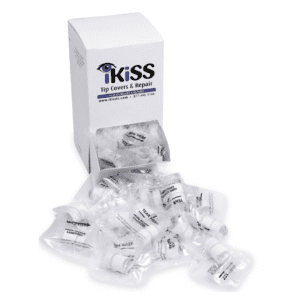
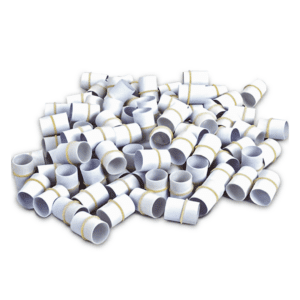
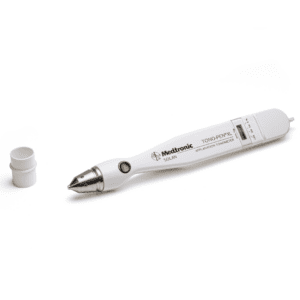
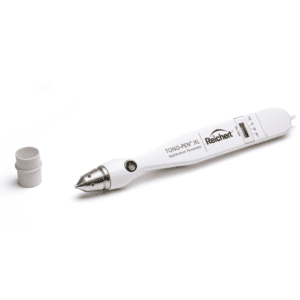
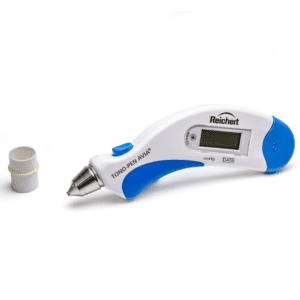
iKiSS is the go-to provider for top-quality refurbished Tono-Pen® Tonometers, Tono-Pen AVIA® Tonometers, Slit Lamps, and Phoropters, offering substantial savings of up to 40%.